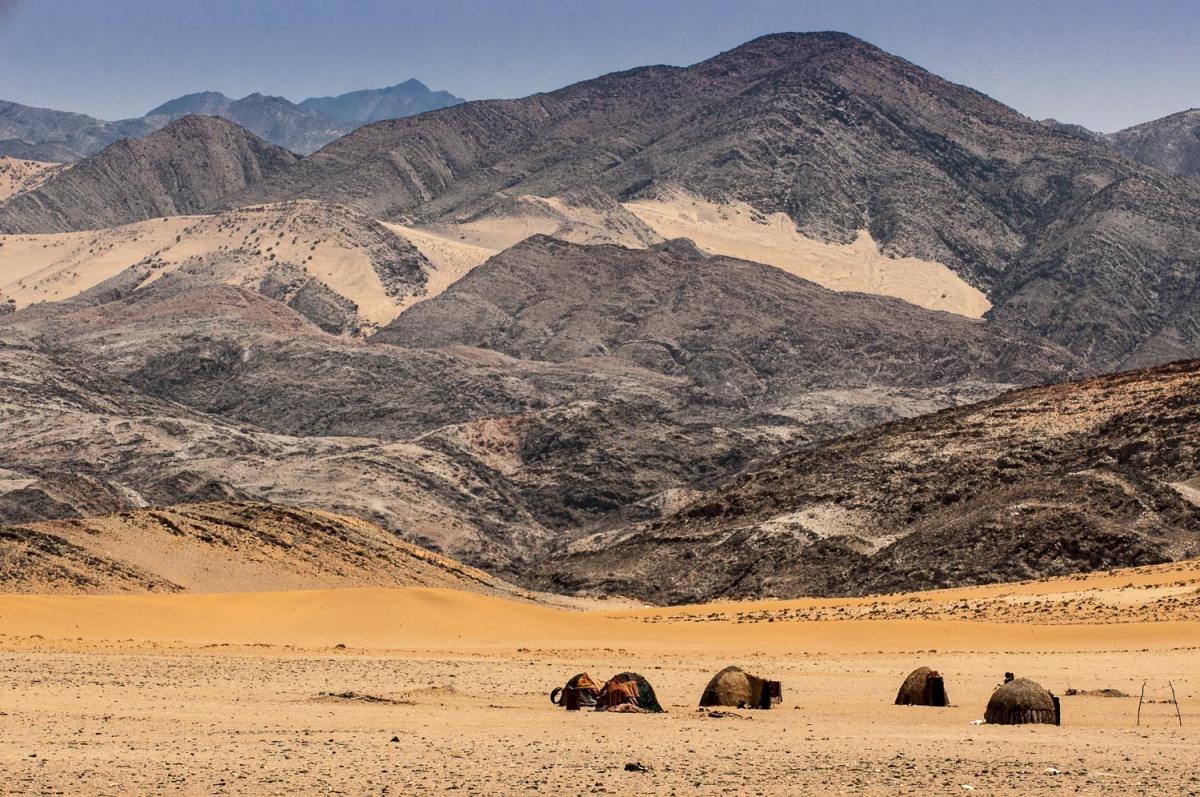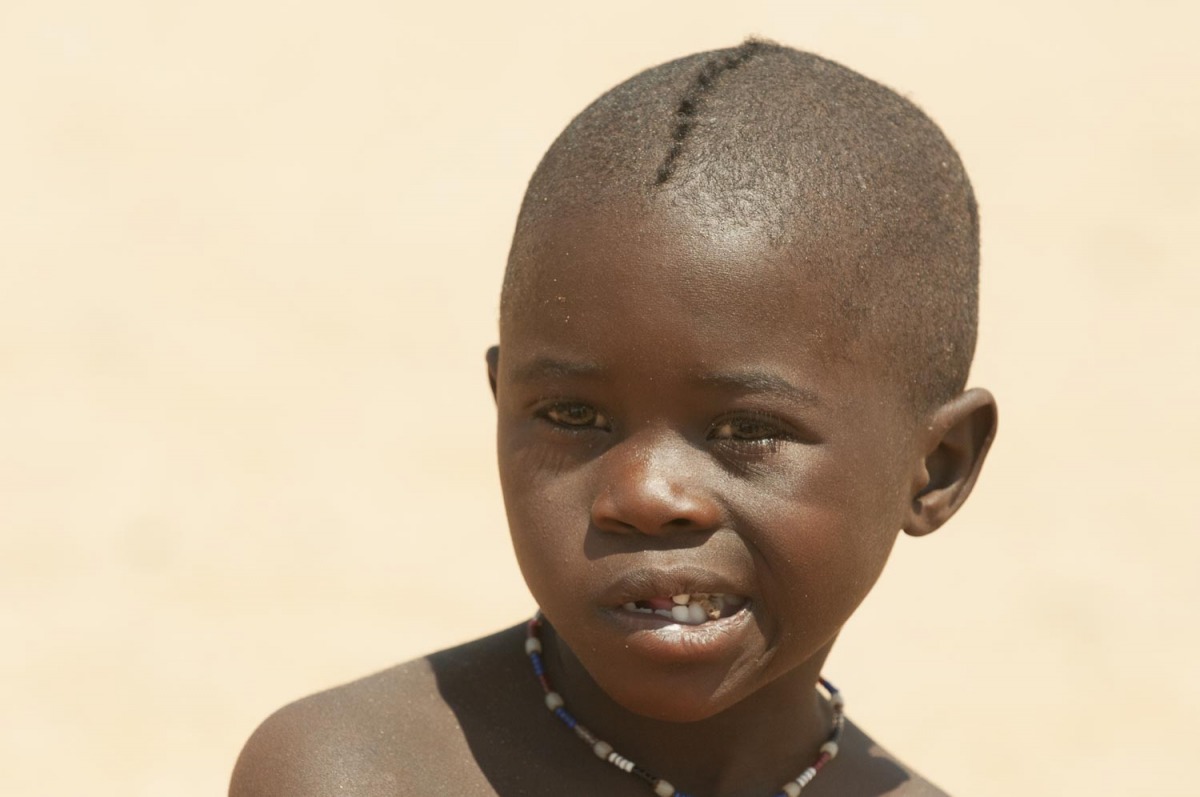The Himba (singular: OmuHimba, plural: OvaHimba) are indigenous peoples with an estimated population of about 50,000 people living in northern Namibia, in the Kunene Region and on the other side of the Kunene River in southern Angola. Culturally distinguishable from the Herero people, the OvaHimba are a semi-nomadic, pastoralist people and speak OtjiHimba, a variety of Herero, which belongs to the Bantu family within Niger–Congo. The OvaHimba are semi-nomadic as they have base homesteads where crops are cultivated, but may have to move within the year depending on rainfall and where there is access to water. The OvaHimba are considered the last (semi-) nomadic people of Namibia.
An excellent place to meet and interact with the Himba people is a settlement close to Serra Cafema camp in northern Namibia on the banks of the Kunene river in the border with Angola, where the following photographs were taken (also see the text below).
Women and girls carry water to the village, earth-plaster the mopane wood homes with a traditional mixture of red clay soil and cow manure binding agent, collect firewood, attend to the calabash vines used for producing and ensuring a secure supply of soured milk, cook and serve meals, as well as artisans making handicrafts, clothing and jewelry. The responsibility for milking the cows and goats also lies with the women and girls. Women and girls take care of the children, and one woman or girl will take care of another woman’s children. The men’s main tasks are tending to the livestock farming, herding where the men will often be away from the family home for extended periods, animal slaughtering, construction, and holding council with village tribal chiefs.
Members of a single extended family typically dwell in a homestead (onganda), a small family-village, consisting of a circular hamlet of huts and work shelters that surround an okuruwo (sacred ancestral fire) and a kraal for the sacred livestock. Both the fire and the livestock are closely tied to their veneration of the dead, the sacred fire representing ancestral protection and the sacred livestock allowing “proper relations between human and ancestor”.
Both the Himba men and women are accustomed to wearing traditional clothing that befits their living environment in the Kaokoland and the hot semi-arid climate of their area. In most occurrences this consists simply of skirt-like clothing made from calfskins and sheep skin or, increasingly, from more modern textiles, and occasionally sandals for footwear. Women’s sandals are made from cows’ skin while men’s are made from old car tires. Women who have given birth wear a small backpack of skin attached to their traditional outfit. Himba people, especially women, are famous for covering themselves with otjize paste, a cosmetic mixture of butterfat and ochre pigment. Otjize cleanses the skin over long periods due to water scarcity and protects from the hot and dry climate of the Kaokoland, as well as from insect bites. It gives Himba people’s skin and hair plaits a distinctive texture, style, and orange or red tinge, and is often perfumed with the aromatic resin of the omuzumba shrub. Otjize is considered foremost a highly desirable aesthetic beauty cosmetic, symbolizing earth’s rich red color and blood, the essence of life, and is consistent with the OvaHimba ideal of beauty.
From pubescence, boys continue to have one braided plait, while girls will have many otjize-textured hair plaits, some arranged to veil the girl’s face. In daily practice the plaits are often tied together and held parted back from the face. Women who have been married for about a year or have had a child wear an ornate headpiece called the Erembe, sculptured from sheepskin, with many streams of braided hair coloured and put in shape with otjize paste. Unmarried young men continue to wear one braided plait extending to the rear of the head, while married men wear a cap or head-wrap and un-braided hair beneath. Widowed men will remove their cap or head-wrap and expose un-braided hair. The OvaHimba are also accustomed to use wood ash for hair cleansing due to water scarcity.















